How to Survive a Solar Eclipse
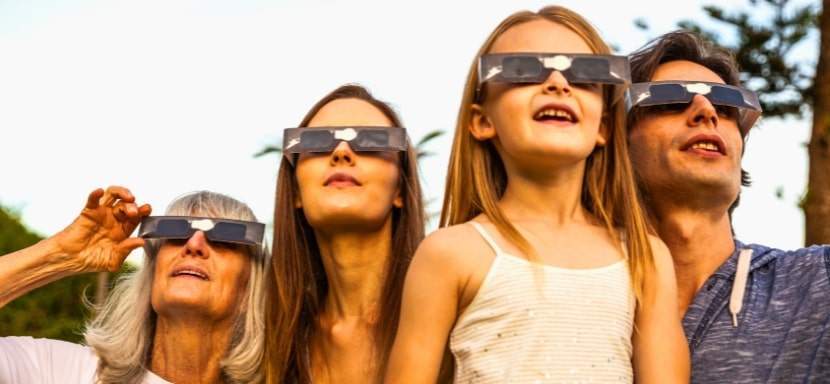
Solar Eclipse Survival Tips and Strategies
Throughout history, solar eclipses have held significant cultural and scientific importance, often interpreted as omens or major celestial events by ancient civilizations. These events have spurred advancements in astronomical understanding and timekeeping, from the ancient Babylonians and Chinese to modern eclipse chasers who study the sun’s corona.
A solar eclipse, a celestial event where the moon passes between the sun and Earth, casting a shadow over Earth, can be a spectacular sight. However, it also poses unique challenges and requires specific precautions to ensure safety. This guide delves into understanding solar eclipses, the risks involved, and how to enjoy this natural phenomenon without compromising your well-being.
- Use Certified Eclipse Glasses: Always wear eclipse glasses that meet international safety standards to protect your eyes from retinal burns during a solar eclipse.
- Learn About Eclipses: Increase your safety and enjoyment by understanding solar eclipses’ different types (total, partial, annular) and mechanics.
- Employ Safe Viewing Methods: Use safe techniques such as pinhole projectors to view the eclipse without exposing your eyes to direct sunlight.
What is a Solar Eclipse?
A solar eclipse is a celestial event when the moon passes between the Earth and the sun, temporarily blocking all or part of the sun’s light from reaching Earth. This alignment can result in different eclipses, including total, partial, and annular, depending on the moon’s position relative to the Earth and sun.
Understanding Solar Eclipses: What Happens During an Eclipse?
A solar eclipse unfolds when the moon moves directly between the sun and Earth, casting a shadow that obscures the sun’s light in certain regions. This phenomenon results from a precise alignment and can manifest in various forms, each providing a unique viewing experience. Here are the details on what happens during each type of solar eclipse:
- Total Eclipse: The moon covers the sun’s disk completely during a total eclipse. Observers in the path of the moon’s complete shadow, or umbra, experience a brief period of darkness in the middle of the day, known as totality. The sun’s faint corona becomes visible during this phase, creating a dramatic and beautiful halo.
- Partial Eclipse: The moon obscures only part of the sun during a partial eclipse. This occurs outside the main path of the total eclipse, where the moon’s shadow, or penumbra, partially covers the sun. Observers view the sun as a crescent, varying the coverage extent by their position relative to the umbra.Annular Eclipse: During an annular eclipse, the moon crosses the solar disk centrally but does not entirely cover the sun because it is farther from Earth and appears smaller in the sky. Instead of achieving totality, observers see a bright ring of the sun’s surface, an annulus, encircles the moon’s silhouette.
How to Safely View a Solar Eclipse: Step-by-Step Guide
Viewing a solar eclipse is a thrilling experience, but it requires taking certain precautions to ensure you do so safely. Here’s a step-by-step guide to help you enjoy the event without risking your eyesight.
- Obtain Proper Eclipse Glasses: Invest in ISO-certified solar eclipse glasses. These glasses protect your eyes from harmful solar radiation during an eclipse. Regular sunglasses, even very dark ones, are unsafe for viewing the sun.
- Plan Your Viewing Location: Choose a spot that will give you a clear, unobstructed view of the sky. National parks, local observatories, or open fields are often good choices, depending on where the eclipse’s path of totality will be visible.
- Check the Weather: A few days before the eclipse, start checking the weather forecast. Clear skies are ideal for eclipse viewing, so if cloudy weather threatens, you might need to consider traveling to a different location.
- Prepare for the Event: Arrive at your viewing site early to set up and avoid any last-minute rush. Bring a chair or blanket for comfort, food, and water, especially if you plan to be out for several hours.
- Use Your Eclipse Glasses: As the eclipse begins, wear your glasses before looking up at the sun. Please do not remove them while you are looking at the sun. Even during a total eclipse, you must wear your glasses during the partial phases before and after totality.
- Use Alternative Viewing Methods: If you don’t have eclipse glasses, you can view the eclipse indirectly by using a pinhole projector. This DIY method involves projecting the sun’s image through a small hole onto a flat surface, allowing you to safely observe the change without looking directly at the sun.
- Observe Changes in Your Environment: As the eclipse progresses, pay attention to the environment around you. Notice how the natural light changes, how temperatures drop, and how animals react to the day’s sudden shift tonight.
- Photograph the Eclipse: If you want to photograph the eclipse, equip your camera or smartphone with a solar filter. Never look through the camera’s viewfinder without proper solar filtration, as it poses the same risk as looking at the sun directly.
- Remove Your Glasses at Totality: If you are in the path of totality, you can safely remove your eclipse glasses only when the moon completely covers the sun. Enjoy the unique sight of the solar corona until the sun begins to reappear, at which point you must put your glasses back on immediately.
- Leave Safely: Once the eclipse is over, pack up your belongings and leave the area carefully. If you are in a public place, be mindful of traffic and large crowds departing the event.
Following these steps will help you safely enjoy the awe-inspiring sight of a solar eclipse and make the experience memorable without compromising your safety.
Did You Know?
During a total solar eclipse, temperatures can drop by up to 20 degrees Fahrenheit. This sudden darkness can trick wildlife into thinking night has fallen, causing birds to roost and nocturnal insects to become active.
Ways to View a Solar Eclipse Safely
Viewing a solar eclipse safely requires proper methods to protect your eyes from the sun’s harmful rays. Here are some practical ways to enjoy this celestial event without risking your vision:
- Use ISO-Certified Eclipse Glasses: Always wear eclipse glasses that meet the ISO 12312-2 international safety standard when looking directly at the sun. These glasses block the sun’s intense rays, allowing you to view the eclipse directly without any harm.
- Create a Pinhole Projector: Make a pinhole projector if you don’t have eclipse glasses. This method involves projecting the sun’s image through a small hole in a piece of card onto a flat, white surface. You can watch the eclipse’s progress on this screen without looking directly at the sun.
- Use a Solar Filter on Telescopes and Cameras: Equip telescopes, binoculars, or cameras with solar filters. These filters must be placed on the front of the device to protect your eyes and the device’s optics from concentrated solar radiation.
- Watch Through aWelder’ss Glass: To view the solar eclipse, use a welder’s glass of Shade 14 or darker. This glass is much darker than regular sunglasses and is designed to protect eyes from intense light during welding, making it suitable for eclipse viewing.
- Attend a Live Stream or Watch on Television: For the safest viewing option, watch a live solar eclipse broadcast. Many astronomy websites and national broadcasters provide live streaming services during major celestial events.
- Join a Community Viewing Event: Many observatories, planetariums, and astronomy clubs organize solar eclipse viewing parties. These events often provide access to specialized viewing equipment and expert guidance to enhance your viewing experience.
Preparations Before the Eclipse
Proper preparation enhances the safety and the enjoyment of viewing a solar eclipse.
Educate Yourself and Others
Understanding what to expect during a solar eclipse is crucial before the event. These celestial occurrences, while awe-inspiring, are rare and require careful planning to be observed safely. Learn about the different phases of an eclipse, the path of totality, and how these factors influence what you will see. Share this knowledge with friends and family who will view the eclipse with you, ensuring everyone is informed and prepared.
Secure Proper Eclipse Viewing Equipment
To safely view the sun during an eclipse, you must use the correct type of eye protection:
- Eclipse Glasses: Invest in eclipse glasses that adhere to the ISO 12312-2 international safety standard. These glasses protect your eyes by filtering out harmful solar radiation.
- Hand-held Solar Viewers: These alternatives to eclipse glasses must meet the same ISO standard to be considered safe for direct solar viewing.
Regular sunglasses, smoked glass, and homemade filters do not offer adequate protection against the intense solar rays experienced during an eclipse. Inadequate eye protection can lead to serious eye injury, so preparing and using only equipment specifically designed for solar viewing is essential.
During the Eclipse
Viewing a solar eclipse is a thrilling experience, but it requires following specific safety protocols to ensure you do so without harming your eyes.
Here’s how to make the most of the event while keeping safety in mind:
Using Your Eclipse Glasses
Proper use of eclipse glasses is essential for protecting your vision during the eclipse. Follow these steps to ensure you are using them correctly:
- Inspect Your Glasses: Before the eclipse starts, check your eclipse glasses for any damage. Look for scratches, punctures, or tears. Discard the glasses and use a new pair if you find any defects.
- Wear Glasses Before Looking at the Sun: Always put on your eclipse glasses while facing away from the sun. This prevents accidental exposure to solar rays before your eyes are protected.
- Keep Glasses On: Once your eclipse glasses are on, you may turn towards the sun. It’s crucial to always keep your glasses on while looking at the sun. Removing them while watching the eclipse can lead to severe eye damage.
- Secure Fit: Make sure your eclipse glasses fit snugly over your eyes. If they feel loose, hold them in place with your hands to prevent any direct sunlight from entering your eyes from the sides.
Alternative Viewing Methods
If you don’t have access to eclipse glasses, there are other safe ways to observe a solar eclipse:
- Pinhole Projector: Create a pinhole projector using simple materials like cardboard and a sheet of white paper. Here’s how to do it:
- Make a small, clean hole in the middle of the cardboard.
- Stand with your back to the sun and hold the cardboard up so that sunlight passes through the hole and projects an image of the sun onto the paper behind it.
- Watch the projection, not the sun, to safely observe the changes as the eclipse progresses.
- Tree Shadows: Use the natural pinhole effect created by tree leaves. Stand under a leafy tree and look at the shadows on the ground. The gaps between leaves will act as multiple pinholes, casting a mosaic of crescents on the ground during a partial eclipse.
- Streaming Online: For an entirely risk-free experience, consider watching a live eclipse stream. Many astronomy websites and science channels offer high-definition broadcasts of significant eclipses.
Health and Safety Considerations
When preparing to view a solar eclipse, it is essential to consider how to view the event safely and ensure overall well-being during the event.
Eye Safety During Eclipses
The intense solar rays visible during an eclipse can cause severe eye damage if viewed without proper protection. To safeguard your vision, follow these guidelines:
- Use Certified Eye Protection: Always ensure that everyone in your viewing party wears eclipse glasses or uses other solar viewing devices that meet the ISO 12312-2 international safety standard. These filters block harmful ultraviolet, visible, and infrared radiation.
- Educate on Proper Use: Instruct all viewers, especially children, on how to use eclipse glasses correctly. Emphasize the importance of always keeping the glasses on during the eclipse to prevent “eclipse blindness” or retinal burns, which can be permanent.
- Provide Alternatives: If proper solar viewing glasses are unavailable, demonstrate using a pinhole projector or other indirect viewing methods as safe alternatives.
Prepare for the Environment
The environment where you view an eclipse can affect your overall experience. Consider these factors when planning your viewing location:
- Check the Weather: To prepare appropriately, monitor the weather forecast for the eclipse day. If the forecast predicts inclement weather, establish a backup plan, such as viewing the eclipse via live stream.
- Plan for Wildlife: Be aware of potential wildlife activity in rural or natural settings. Some animals may become confused or active due to the sudden darkness during totality.
- Expect Large Crowds: Solar eclipses often attract many viewers, especially in areas along the path of totality. Plan to arrive early to secure a good spot, and be prepared for traffic delays and crowded conditions.
- Ensure Comfort and Accessibility: Choose a viewing site accessible for all group members, including those with mobility issues. Bring necessary supplies such as water, snacks, chairs, and blankets to stay comfortable during the event.
After the Eclipse
Once the solar eclipse has passed, there are essential steps to ensure your health and capture the event’s significance.
Post-Eclipse Eye Care
Considering your eyes after viewing a solar eclipse is crucial, even if you use proper protection. Follow these steps if you experience any discomfort or changes in vision:
- Seek Professional Advice: Consult an eye care professional if you notice any discomfort or visual changes following the eclipse. Symptoms to watch for include blurred vision, a dark spot in your central vision, or increased sensitivity to light.
- Rest Your Eyes: If your eyes feel strained, give them some time to recover. Avoid bright lights and screen time as much as possible immediately following the eclipse.
- Understand Individual Sensitivity: Individual sensitivity to sunlight can vary, and even the best protective measures may not prevent all discomfort.
Reflect on the Experience
Documenting and sharing your experience can enhance the personal and communal value of the eclipse event:
- Capture Your Impressions: Take photos or videos during the eclipse to capture your unique atmospheric effects and viewing environment. Remember to use the appropriate filters to protect your camera and eyes when photographing the sun.
- Write About Your Experience: Share your thoughts and feelings about the eclipse in a blog post or an article. Describe what you saw, felt, and learned.
- Use Social Media: Post your eclipse photos and stories on social media to share with a broader audience. This can help spread awareness and appreciation for such celestial events and connect you with others who share your interest in astronomy.
- Participate in Community Discussions: Join forums or local astronomy clubs to discuss your experiences and learn from others. This can be a great way to deepen your understanding of solar eclipses and to prepare for future events.
FAQs About Solar Eclipses
How often do solar eclipses occur?
Solar eclipses happen approximately 2 to 5 times a year. However, observing a total eclipse from any given location on Earth might happen only once in several decades.
Is viewing a solar eclipse through a camera, telescope, or binoculars safe?
No, unless specific solar filters are attached to the front of the device. Standard filters are insufficient when using these devices, and direct viewing can cause severe eye damage.
Can pets and animals experience eye damage during eclipses?
Animals usually do not look at the sun; solar eclipses should not pose an additional risk. However, keeping pets indoors with windows covered during the event is a good idea.
What should I do if I accidentally look at the sun without protection?
If you glance at the sun without protection, look away immediately. If you notice any signs of eye discomfort or vision problems following the eclipse, consult an eye care professional.
Can I photograph a solar eclipse?
Yes, but you must use a solar filter to protect your camera and eyes. Consult with experienced photographers and read specific guides on photographing eclipses for best practices.
Safely Enjoying the Wonders of a Solar Eclipse
Successfully surviving a solar eclipse hinges fundamentally on thorough preparation and diligent protection.
By educating yourself about the eclipse’s phases, securing the appropriate eye protection, and adhering to safe viewing practices, you ensure a risk-free enjoyment of this magnificent celestial spectacle. A solar eclipse provides a rare opportunity to witness the vast mechanics of our solar system in action. It deserves your respect and awe—qualities that should translate into meticulous preparation.
As you prepare for this unique event, remember that your safety enhances the experience, allowing you to fully immerse in the cosmic dance of the sun, moon, and Earth without jeopardizing your well-being.
So gear up, look up, and let the grandeur of the universe inspire you safely and memorably.
Notable Solar Eclipses in History
This list highlights some of history’s most significant solar eclipses, marking important scientific advancements or cultural milestones. From ancient times to the modern era, these eclipses have captured societies’ imaginations and driven scientific discovery.
- May 28, 585 BCE: Often cited as the eclipse that ended the war between the Lydians and Medes. This eclipse, predicted by Thales of Miletus, famously halted a battle and led to peace between the two warring nations.
- August 21, 1560: Known for its observation by astronomers in Europe, this eclipse helped refine the understanding of the moon’s motion and relationship with the sun.
- May 3, 1715: Mapped by Edmond Halley, this eclipse across England allowed Halley to create a more accurate map of the path of totality, improving the prediction of future eclipses.
- July 28, 1851: The first solar eclipse was photographed at the Royal Observatory in Königsberg, Prussia. This photograph marked a significant advancement in astronomical documentation and study.
- May 29, 1919: During this eclipse, Arthur Eddington performed observations confirming Einstein’s general relativity theory. The positions of stars near the sun during the eclipse supported Einstein’s predictions about light bending around massive objects.
- February 26, 1979: Known as the last total solar eclipse of the 20th century visible from the contiguous United States, it spurred widespread interest and viewership nationwide.
- August 11, 1999: This was the last total solar eclipse visible in Europe until 2026. It crossed over Europe, the Middle East, and India, making it one of the most observed eclipses in history.
- August 21, 2017: The “Great American Eclipse” was the first total solar eclipse to span the United States coast-to-coast since 1918. This eclipse became a significant cultural event, widely viewed and celebrated across the United States.
- April 8, 2024: The “Great North American Eclipse” was a total eclipse visible across North America. An estimated 31.6 million people reside in the path of totality, compared to 12 million in 2017. Additionally, another 150 million people live within 200 miles of the path of totality.
More Real Life Scenarios
How to Survive a Layoff
Layoffs feel personal—even when they’re not. One day, you’re responding to Slack messages and forwarding…
How to Survive a Drug Test
I never imagined I’d be so emotionally invested in a paper cup. But there I was, standing under the fluorescent…
How to Survive an Interrogation
If you’ve ever been caught in the crosshairs of an overly enthusiastic mall cop or stared down by someone…
How to Survive a Bachelor Party
A bachelor party is a delicate mix of celebration, chaos, and questionable decision-making, wrapped…
How to Survive Your First Time at the Gym
Walking into a gym for the first time can feel like stepping into an alien world. The machines hum with…
Recent Survival Posts
How to Survive a Layoff
Layoffs feel personal—even when they’re not. One day, you’re responding to Slack messages and forwarding…
How to Survive a Drug Test
I never imagined I’d be so emotionally invested in a paper cup. But there I was, standing under the fluorescent…
How to Survive an Interrogation
If you’ve ever been caught in the crosshairs of an overly enthusiastic mall cop or stared down by someone…
How to Survive a Nightclub Shooting
Nightclubs pulse with life—lights flashing, music pounding, bodies packed tight on the dance floor. It’s a place to…
How to Survive a Bachelor Party
A bachelor party is a delicate mix of celebration, chaos, and questionable decision-making, wrapped…
More Nature’s Wrath Survival Scenarios

How to Survive a Landslide
Landslides are one of nature's sudden, unexpected acts, like finding a $20 bill in an old jacket—only there's no thrill of discovery, just destruction. They strike without much warning, sweeping away everything in their path—homes, roads, vehicles, and, tragically,...

How to Survive a Hurricane
Hurricanes are nature's way of reminding us who's in charge—think of it as the weather throwing a tantrum. The winds howl, the rain pours, and trees bend until they snap. But while hurricanes are frightening, surviving them is possible with good preparation, clear...
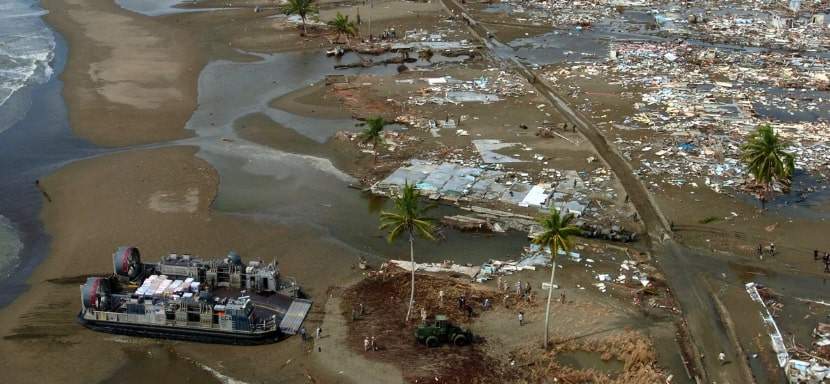
How to Survive a Tsunami
Surviving a tsunami is a terrifying thought, but we should all be aware of it, especially if we live near coastlines. A tsunami can strike with little warning, and the key to making it through alive is to know what to do before, during, and after the waves hit. Here,...
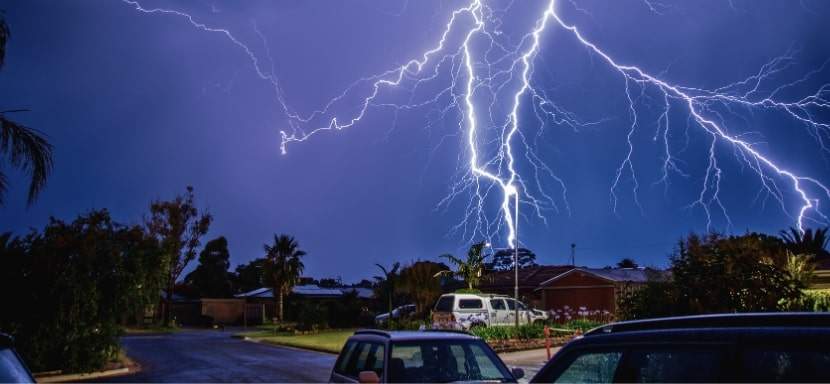
How to Survive a Lightning Strike
Thunderstorms are a mesmerizing display of nature's power, but they also bring the terrifying threat of lightning strikes. Each year, thousands of people worldwide are affected by lightning, with severe injuries and even fatalities resulting from these sudden...
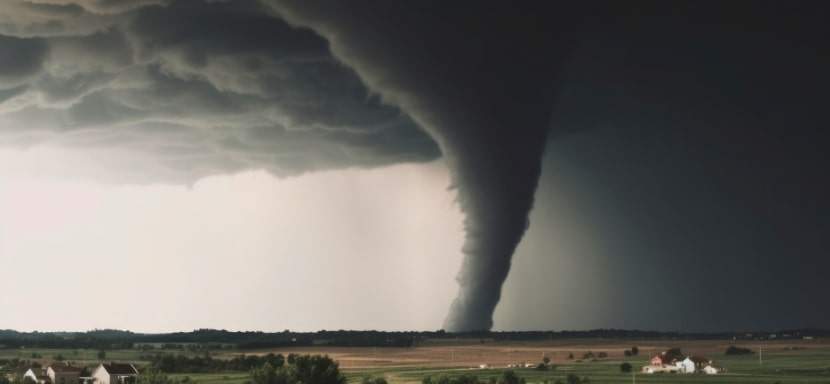
How to Survive a Tornado
Tornado Safety: How to Survive and Protect Your Family Learn life-saving strategies to protect yourself and your loved ones from the unpredictable fury of tornadoes. Tornadoes are among the most unpredictable and destructive natural phenomena. Their sudden and violent...
More Survival Scenarios

How to Survive a Layoff
When the Floor Falls Out: The Reality of a Layoff Layoffs feel personal—even when they're not. One day, you're responding to Slack messages and forwarding emails. Next, you're staring at your monitor as it logs you out... for good. Whether it's a restructuring, a...

How to Survive a Drug Test
The Cup, The Room, The Truth I never imagined I’d be so emotionally invested in a paper cup. But there I was, standing under the fluorescent hum of a strip-mall clinic, trying to recall the last time I ate a poppy seed bagel. That’s the thing about drug tests—they...

How to Survive an Interrogation
If you've ever been caught in the crosshairs of an overly enthusiastic mall cop or stared down by someone in a uniform with a clipboard and a glare, you’ve felt it — the chilly fingers of interrogation anxiety. And while most of us imagine interrogation scenes as...

How to Survive a Nightclub Shooting
Nightclubs pulse with life—lights flashing, music pounding, bodies packed tight on the dance floor. It’s a place to escape, feel the rhythm, and lose yourself in the crowd. But that same energy can turn deadly in seconds, transforming a night of fun into one of the...

How to Survive a Bachelor Party
A bachelor party is a delicate mix of celebration, chaos, and questionable decision-making, wrapped in the noble intention of sending the groom off into married life with a night he’ll (hopefully) remember. It’s a ritual as old as time—well, as old as men deciding...

How to Survive Your First Time at the Gym
Walking into a gym for the first time can feel like stepping into an alien world. The machines hum with purpose, the regulars move confidently, and you’re left standing there, clutching your water bottle, wondering whether you’re in the right place—or on the right...

How to Survive a Worldwide Communications Breakdown
Imagine waking up to silence. Your phone doesn’t buzz, your email won’t load, and even your local radio station crackles with static. A worldwide communications breakdown has hit. What next? For many, this doomsday scenario may sound like the opening lines of a...
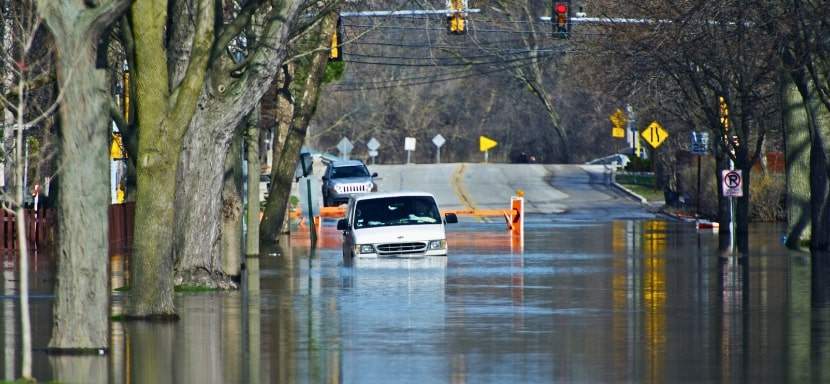
How to Survive a Flash Flood While Driving
Surviving a flash flood while driving requires quick thinking, calmness, and a solid plan to ensure your safety. Preparation can make all the difference between a close call and a catastrophe in emergencies like this. This guide provides practical advice to protect...
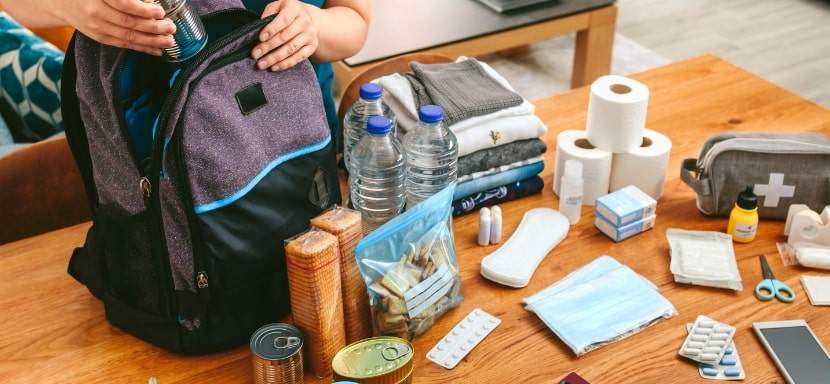
How to Build an Emergency Kit
Emergencies don’t knock politely at the door. They barge in, uninvited, like a distant relative with a penchant for drama, turning your world upside down without warning. Whether it’s a power outage, a natural disaster, or an unexpected evacuation, the key to staying...

How to Protect Yourself From Insects in the Wild
There’s nothing like being out in the wild—birdsong echoing through the trees, the fresh scent of earth, and a deep sense of peace that makes you think, “Ah, this is what life is about.” But then comes the buzzing. Mosquitoes, ticks, and flies swoop in like uninvited...
